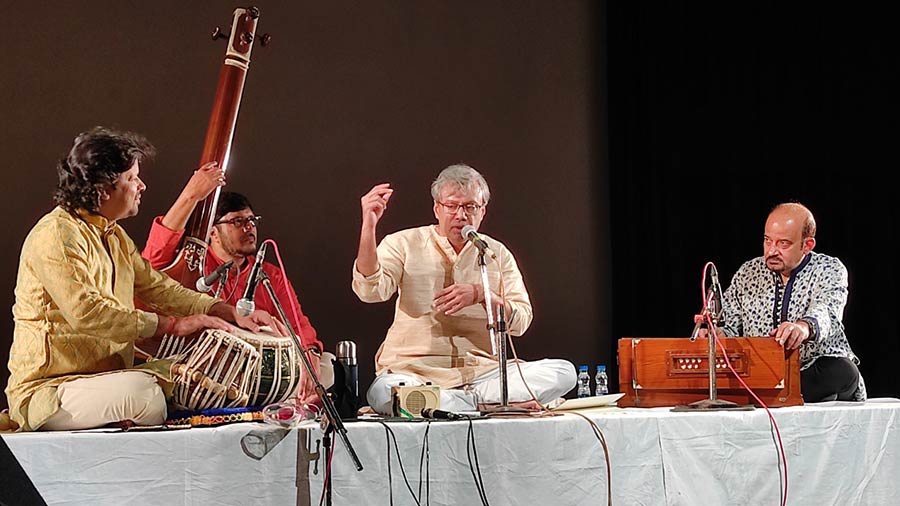The evening of December 5 saw novelist and musician Amit Chaudhuri pay a musical tribute to Rammohan Roy on the occasion of his 250th birth anniversary. Chaudhuri presented and discussed the result of his experimentation with khayal and raga — a new raga called Rammohan.
Chaudhuri’s musical experiments were described in his book Finding the Raga (winner of the 2022 James Tait Black Prize). The book saw Chaudhuri explore khayal and how, in contrast to the Western idea of harmony, the raga approaches a simultaneity of notes and their interrelationships. Taking these thoughts further, Chaudhuri’s subsequent projects — a composition of a new raga based on the Western classical tune, O Sole Mio, emerged from his belief that rather than melodies being based on ragas, ragas are investigations into melodies, slowing them down to reflect on and creatively explore their structures and forms.
Chaudhuri said the new way of thinking what the raga represents adds to the idea of how progression might happen beyond the linear movement of the musical scale. Earlier this year, he performed a raga and khayal compositions arising from O Sole Mio at the Holywell Music Room, Oxford, and at Smith College, Massachusetts.
Raga Rammohan, Chaudhuri said, emerges from a similar line of thinking and openness to experiment. Taking his cue from Ravi Shankar's creation of Mohankauns in response to Mahatma Gandhi's passing away, where the sitar maestro decided to incorporate the notes ga ni dha to invoke Gandhi, Chaudhuri combined Ramkeli and Mohankauns (Ram from Ramkeli and Mohan from Mohankauns) to create raga Rammohan.
The programme was organised jointly by the Kolkata Society for Rammohan Roy Reappraisal at 250 and Navras School of Performing Arts and was a part of the ongoing 250th birth anniversary celebrations of Raja Rammohan Roy being conducted by the society, which aims at bringing out the many facets of Rammohan both in the intellectual and musical scene.

